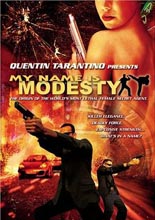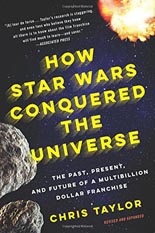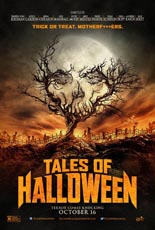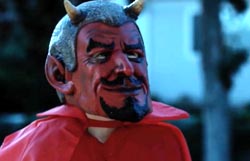
 Despite toiling as a sexy spy, the comic-strip character Modesty Blaise never quite caught on in America. A 1966 movie based on Peter O’Donnell’s creation, Modesty Blaise, was made anyway, with Monica Vetti and Terence Stamp. It tanked.
Despite toiling as a sexy spy, the comic-strip character Modesty Blaise never quite caught on in America. A 1966 movie based on Peter O’Donnell’s creation, Modesty Blaise, was made anyway, with Monica Vetti and Terence Stamp. It tanked.
A few decades later, Miramax had the great idea of reviving Blaise for an intended series of action-packed films; arbiter of pop-culture taste Quentin Tarantino agreed, hopping aboard as a producer. Whereas Natasha Henstridge and Reese Witherspoon were mentioned for the role, no one was cast until Miramax’s rights were due to expire. Only then did the indie studio rush a Romanian-lensed prequel into production. Shot in 18 days by Tarantino pal Scott Spiegel (From Dusk Till Dawn 2: Texas Blood Money), it stars neither Henstridge nor Witherspoon, but the unknown (and, looking malnourished, unsexy) Alexandra Staden (Alexandra Staden, The Task). Is this any way to start a franchise?
 The answer is, as My Name Is Modesty makes painfully clear, no. The string-beaned Modesty pulls double duty as a casino card dealer and bodyguard. When its owner is brutally murdered and the joint’s fully vested employees taken hostage by the killer Miklos (Nikolaj Coster-Waldau, Mama), Modesty keeps her cool and makes a wager with him. They play roulette, and whoever wins the round earns a reward: she, a released hostage; he, personal intel about Modesty.
The answer is, as My Name Is Modesty makes painfully clear, no. The string-beaned Modesty pulls double duty as a casino card dealer and bodyguard. When its owner is brutally murdered and the joint’s fully vested employees taken hostage by the killer Miklos (Nikolaj Coster-Waldau, Mama), Modesty keeps her cool and makes a wager with him. They play roulette, and whoever wins the round earns a reward: she, a released hostage; he, personal intel about Modesty.
This being fiction, Miklos has absolutely incredible luck at the wheel, as he wins nearly every spin. Thus, Modesty fills him in on her upbringing — cue the flashbacks! — as a filthy orphan saved by a kindly old professor (Fred Pearson, 1994’s Priest) who taught her reading and kung fuing.
Modesty and Miklos talk and talk and talk and talk. And talk! Then, at the movie’s tail end, some half-assed gunfire and utterly weak martial arts erupt. Sad to say, but this tiny film — one that, at just 78 minutes, barely qualifies as one — takes place in one room and sorely lacks action, suspense, espionage or intrigue. And yet the powers that be at Miramax still had the gall to subtitle it A Modesty Blaise Adventure. (To be fair, that four-word subtitle is 75 percent representative of the flick’s contents.)
The one-room set isn’t the only tip-off that Miramax didn’t shell out more than a pittance for this sluggish mess. Another big one is its look, bearing the drab visage of a syndicated TV action hour. Worse, with the generic music, the chintzy title sequence that incorporates scenes we’ll soon see, the questionably attractive actresses and the swarthy-looking muscular males, the secret-agent origin story threatens to turn into softcore Cinemax fare at any moment.
But don’t go looking for flesh. Her name is, after all, Modesty. —Rod Lott




 At least one positive emerged from
At least one positive emerged from 




